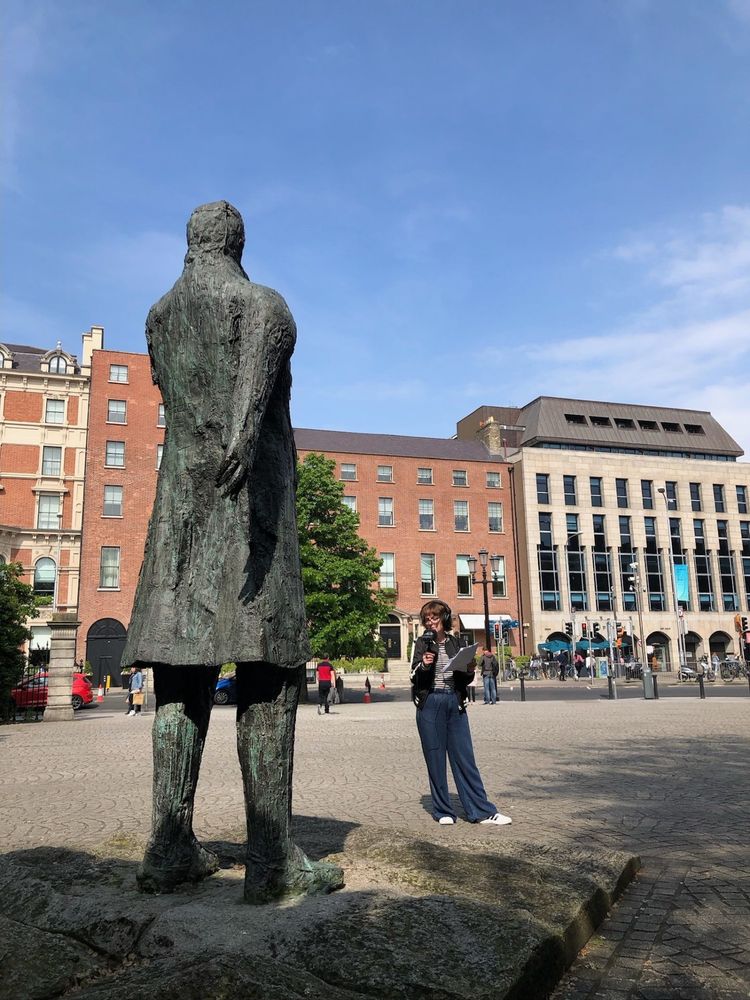This week on Documentary on Newstalk, Producer Patricia Baker of Curious Broadcast takes a walk past the many famous and infamous statues and monuments in Dublin, in the radio documentary Dead White Men, and considers who and how we commemorate. By talking with academics and arts practitioners she asks questions about the monuments that we have chosen to destroy, those we have kept and those perhaps we should not. This is a walk through the monuments controversy past and present.
Dead White Men will air on Sunday August 20th at 7am, repeated Saturday August 26th at 9pm. The program will also be available as a podcast on GoLoud and all major platforms.
“Every monument will eventually come down, because they are, by their very nature antagonistic, it is just inevitable all of these monuments will come down at some point or another and these discussions will be had’, said Dr Emma Mahony, course leader, BA of Visual Culture at the National College of Art and Design. “It is important to trigger these conversations but also to remember the people who are conversely affected by these monuments. And some monuments just have to come down’, she said.
The notion that the controversy around whether monuments should come down is something new is wrong. Discussions on whether they remain or are removed has been around since the ancient world. ‘They were putting up and tearing down monuments back in the Roman times and before, it is not new’, said Paula Murphy, Emeritus Professor, School of Art History and Cultural Policy, University College of Dublin.
The documentary also explores the idea that a lot can be told about the city from the statues that are still standing and also by the absences of statutes that have been taken down or blown up in the past.
“The question of commemoration really begs the question of de-commemoration. It is a wider social discourse that probably should be had. And it will tell as much about us as it will anything else, as to what we choose to remember and what we choose to forget’, said Dr Conor Mulvay, Associate Professor of Modern History in University College Dublin.
‘Because there are layers of statutes through the city, be they religious iconography, British and Imperial statutes, statues of the Irish patron faction of the 18th century or Republican statutes, that will be de-commemorated either through official removal or iconoclasm. As a historian I am not involved in this on an activist level; it is just interesting to see what each generation, what each iteration of our society, decides to commemorate in terms of the creation of statutes, but also how they choose to interact with statutes, including official removal and iconoclasm’, he said.
Questions are also asked around Dublin’s increasing multiculturalism and how statues erected in the past may not reflect that changing face of Dublin. ‘In a country that is now multicultural and looks different, and not as homogeneous as it was before, why are there not representations of that change?’ Asks Dr John Wilkins, Irish Research Council Enterprise Fellow at Irish Museum of Modern Art, and Trinity College Dublin School of Language, Literature and Cultural Studies. ‘To value that change and acknowledge that diversity really does matter here,’ he says. ‘Why are there not any representation of that?’
Dr Gillian O’Brien reader in Modern Irish History at Liverpool John Moore’s University picks up on this point. “We need to change our perspective of how we talk about the past, one of the things when I was travelling around the country looking at what we commemorate or memorialise is that we don’t talk about Ireland as an immigrant country. Ireland has always been full of immigrants and that is not represented in our statutes. It is not represented enough in our museums or our history syllabus or in our books. That means that the people who are coming in now don’t see themselves in our past and yet they are there. They might not be from the same countries but they are there and they have always been there. And I think you are seeing that in the narrative today, where people are being quiet hostile to others arriving, but they have always been arriving. Those people arriving are made feel that they are the first and this is a whole new thing. It is not true. They should be seeing themselves in our version of themselves in all of our museums, on our street names, in our statutes, but they are not.”
By stopping at the Spire, and the site of Nelson’s Column, as well as Wolf Tone’s often forgotten statue at the corner of St. Stephen’s Green, and more contemporary examples of commemoration along the Liffey in Islandbridge and at a secondary school on Ballymun, Dead White Men is a walk through the ‘monuments controversy’ past and present.
Dead White Men is a Curious Broadcast Production, Funded by Coimisiún na Meán with the Television Licence Fee.
Dead White Men will air on Sunday August 20th at 7am, repeated Saturday August 26th at 9pm. The program will also be available as a podcast on GoLoud and all major platforms.





























